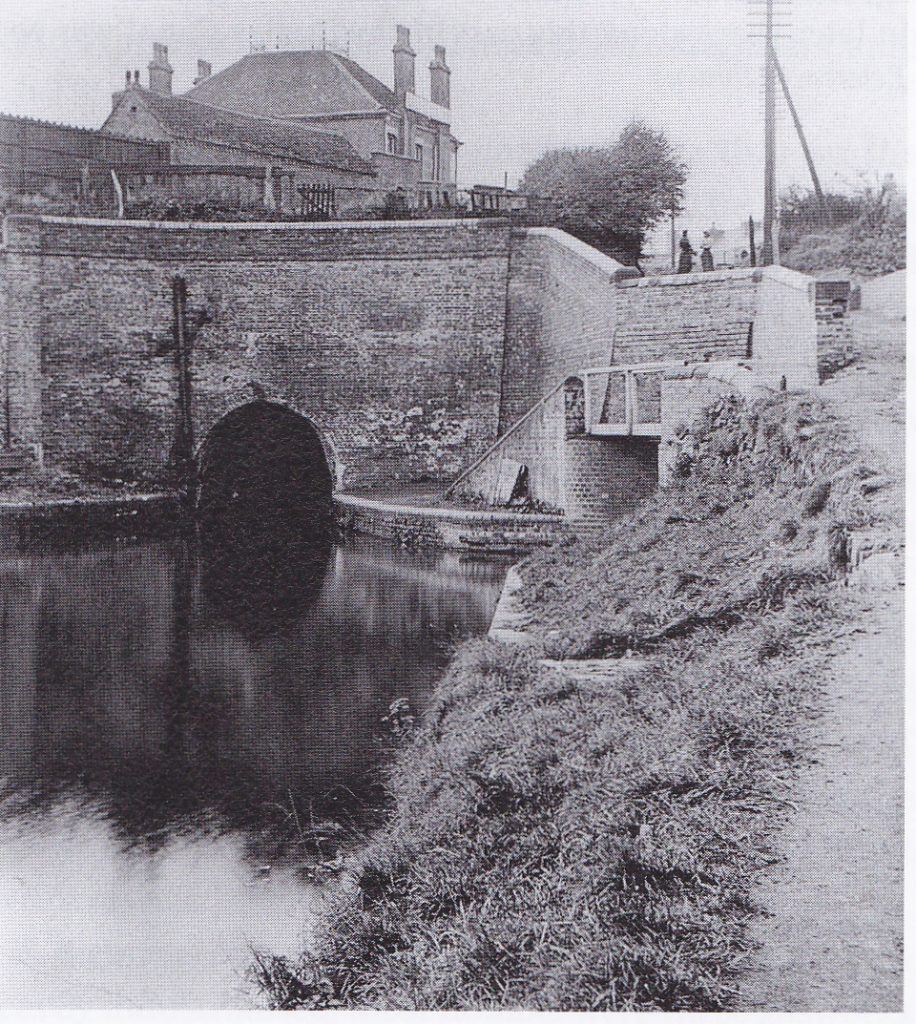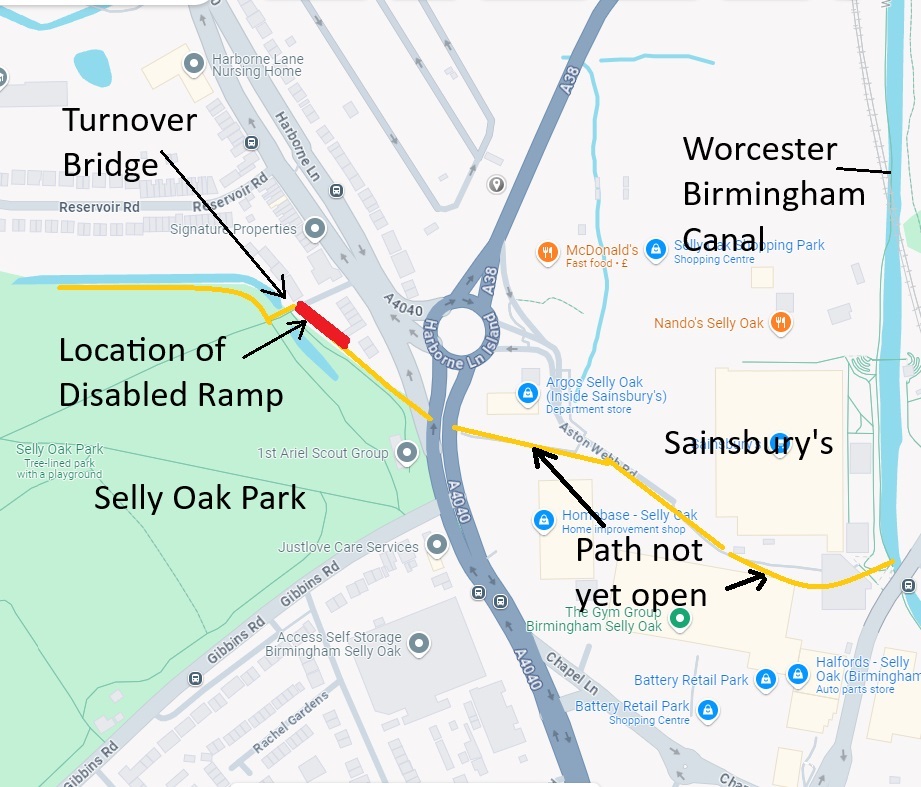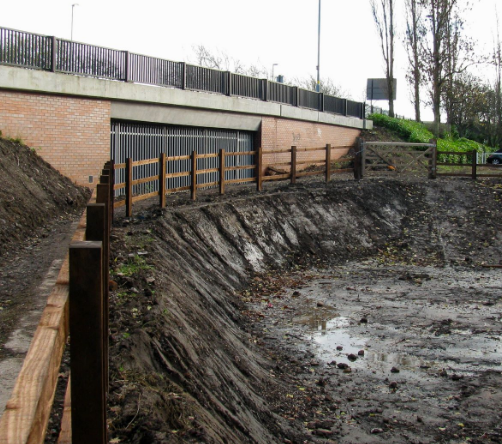
The Lapal Canal is the derelict eastern ‘half’ (5.5 miles) of the otherwise viable Dudley No. 2 Canal in the West Midlands (UK). In 1798, the full 11-miles long canal was opened to provide a lock-free (i.e. level) bypass to avoid canal congestion in central Birmingham. It linked the Dudley No. 1 Canal to the Worcester & Birmingham Canal in Selly Oak, as a ‘speedy’ route to get coal from the Black Country measures to London.
Surveyed and constructed to be a contour canal at the Birmingham Water Level, it had to cross two major, off-level geographical features:
– The Leasowes Valley, forming poet Shenstone’s landscaping in Halesowen, was straddled with a 60 ft (18 m) high, steep-sided earthen embankment, while;
– The high ground at Woodgate (the watershed between Rivers Severn and Trent) was traversed with the Lapal Tunnel of length; 3,795 yards (3,470 m) or 2.2 miles.
It was the fourth longest tunnel in UK and amongst the most narrow, being designed for passage by traditional legging. The typical transit time was 4 hours, until 1841 when Thomas Brewin installed a steam-engine pump to ‘flush’ boats through in about 2 hours. The tunnel’s 120 years of viable operation was often interrupted by closures due to localized but economically repairable roof-falls. But in 1917, through-navigation ceased leading to the gradual closure of the approach channels and then formal abandonment in 1953.
In full contrast, the northern ‘half’ canal to Hawne Basin; a former rail-canal interchange basin, remains viable and picturesque to this day. In 1990, the Lapal Canal Trust (LCT) was formed to champion for eventual restoration, to enhance the entire WM network (the BCN). The Lapal project divides into approximate thirds being: West, Halesowen, Dudley; central or Woodgate; East, Selly Oak, Birmingham.
In 1997, Dudley MBC commenced a restoration of the Leasowes’ channel in Halesowen but only to a shallow water depth at present. In 2007, LCT commissioned Atkins consultancy for a full Feasibility Study towards a manageable incremental restoration scheme. Atkins’ chief and radical recommendation is to replace the former tunnel with an “over-the-top” (OTT) re-alignment along the Woodgate Valley floor. The proposed line runs parallel to and close by the Bourn Brook, and requires two small (“Lapal”?) tunnels under the M5 at J3 and the Quinton Expressway. Ascent and descent to the UK’s second highest summit level will require two flights of ten locks each and a water back-pumping scheme.
Even so, all this is ‘cheaper’ than would be a tunnel re-built to modern safe-working specification, and it can be implemented in affordable stages. The full outcome will be a continuous canal corridor offering fully rural recreation for all manner of users, not just boaters. The elevated OTT alternative route also allows the canal to deliver solutions to smaller but significant issues and concerns:
– In California we can consider a large marina (perhaps flanked with town houses) to ‘sit on top’ of the methane-generating buried waste.
– In Halesowen, we can consider crossing the A456 with an aqueduct – perhaps of spectacular design when the time comes?
The former existence of the Lapal Tunnel is to be preserved, perhaps with a short, dry walk-in length at the re-exposed former Lapal portal. Secondary benefits of full restoration include the rejuvenation of the heritage sites at St Mary’s Abbey and Weoley Castle ruins. The Atkins’ Study also recommends an East-to-West restoration order; there being fewer non-standard sections to restore first.


In 2009, the canal bridge under Harbourne Lane (A4040) was rebuilt (for the third time!) as part of major development of the Q E Hospital complex and Selly Oak.
Sainsbury’s are poised to build a new food-store, just north of the canal junction, and re-instate bridges and the first Lapal channel (approx. 900 yards).
For 2010, the LCT, supported by the Inland Waterways Association, has funded a Planning Study to extend renewed navigation into Selly Oak Park as visitor moorings. The general strategy of LCT is to acquire (identify) funds for a restoration project, then, in partnership with the Local Authority, commission contractors for the work.
Supplementary LCT activities include liaisons with relevant parties; MPs, Councilors, Friends and Residents in Selly Oak, Woodgate and Halesowen. Members of LCT and volunteer enthusiasts also undertake occasional work-parties for litter-picking, scrub-bashing, etc., to preserve the Lapal corridor. Newsletters; Lapal Link, Displays and Presentations (including archive material) are prepared and delivered to communicate the Lapal Aim.